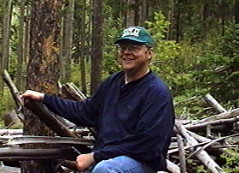Google ventures into new territory with the Google Desktop. This application appears to sit on top of Windows XP and to offer what Google must see as an improved set of services relative to the Windows-only operating system. So, in addition to accessing Google online services, you can launch your own programs.
What about Mac users? The “Desktop” is similar to the Google Home page I described previously (without the capacity to launch local documents).
Mac users can take some solace in the fact that when I installed Google Desktop on my XP machine I made the mistake of updating Internet security (Norton and Windows). By the time I was done, I had somehow created a conflict between the Norton firewall and the Windows firewall that prevented Firefox from connecting to the Internet. After several hours of playing around, I removed Firefox so that when I find a reason to use the windows machine again (in a month or so), I will not have to try to remember why Firefox no longer works. I don’t know who to blame – Microsoft, Norton, Mozilla or me.
The Washington Post provides an overview of Google Desktop.
![]()
